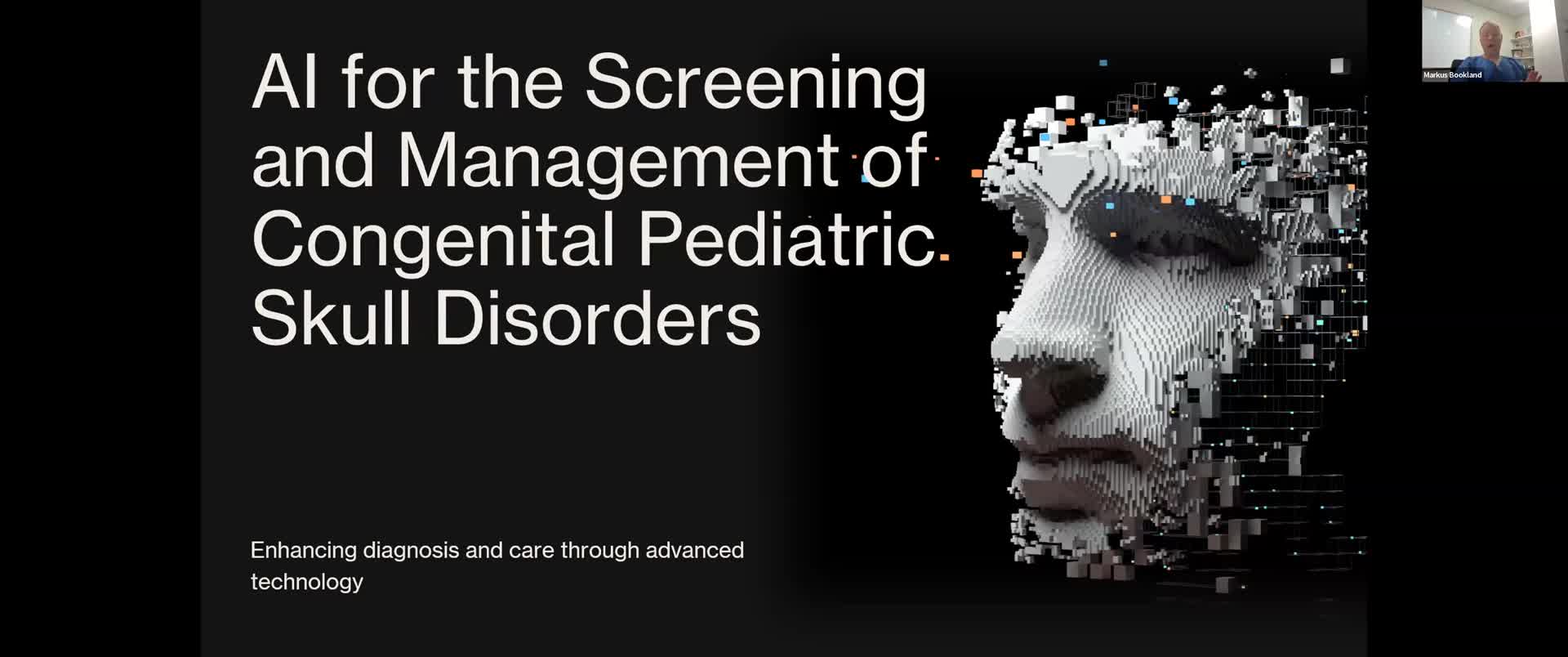Connecticut Children's Uses AI To Detect Craniosynostosis Early And Improve Treatment Outcomes
October 01, 2025 | Department of Public Health, Departments and Agencies, Organizations, Executive, Connecticut
This article was created by AI summarizing key points discussed. AI makes mistakes, so for full details and context, please refer to the video of the full meeting. Please report any errors so we can fix them. Report an error »

In a recent meeting of the Rare Disease Advisory Council, experts gathered to discuss a groundbreaking approach to diagnosing craniosynostosis, a rare skull disorder affecting newborns. This condition, which occurs when one or more joints in a baby's skull fuse too early, can lead to severe complications if not treated promptly. While some cases are merely cosmetic, others can result in serious issues like seizures and developmental delays.
Dr. [Name], a craniofacial surgeon, highlighted the critical importance of early diagnosis and intervention. With craniosynostosis affecting approximately 1 in every couple thousand children, timely treatment is essential. Unfortunately, many cases go undetected due to the commonality of head shape variations in newborns, leading to delays in necessary surgical procedures.
To combat this issue, Dr. [Name] and his team at Connecticut Children's have developed an innovative solution using artificial intelligence (AI). By creating AI algorithms capable of analyzing images of children's heads, they aim to improve the speed and accuracy of diagnoses. Families and pediatricians can now submit simple photographs for screening, allowing for quicker risk assessments. This approach has already shown promising results, with patients being referred to specialists an average of 20 days sooner than before.
The integration of AI not only streamlines the diagnostic process but also enhances treatment options. Early intervention allows for less invasive surgical procedures, reducing recovery time and hospital stays. However, the initiative is not without challenges. Concerns regarding data privacy and potential biases in the AI model must be addressed as the technology expands.
Looking ahead, Dr. [Name] emphasized the potential for this AI-driven approach to reach underserved regions with limited access to craniofacial specialists. By incorporating telehealth services, the goal is to ensure that more children receive timely diagnoses and appropriate care, ultimately improving outcomes for those affected by craniosynostosis and potentially other rare diseases.
As the meeting concluded, it was clear that the intersection of technology and healthcare holds great promise for transforming the landscape of rare disease diagnosis and treatment, paving the way for a future where timely intervention becomes the norm rather than the exception.
Dr. [Name], a craniofacial surgeon, highlighted the critical importance of early diagnosis and intervention. With craniosynostosis affecting approximately 1 in every couple thousand children, timely treatment is essential. Unfortunately, many cases go undetected due to the commonality of head shape variations in newborns, leading to delays in necessary surgical procedures.
To combat this issue, Dr. [Name] and his team at Connecticut Children's have developed an innovative solution using artificial intelligence (AI). By creating AI algorithms capable of analyzing images of children's heads, they aim to improve the speed and accuracy of diagnoses. Families and pediatricians can now submit simple photographs for screening, allowing for quicker risk assessments. This approach has already shown promising results, with patients being referred to specialists an average of 20 days sooner than before.
The integration of AI not only streamlines the diagnostic process but also enhances treatment options. Early intervention allows for less invasive surgical procedures, reducing recovery time and hospital stays. However, the initiative is not without challenges. Concerns regarding data privacy and potential biases in the AI model must be addressed as the technology expands.
Looking ahead, Dr. [Name] emphasized the potential for this AI-driven approach to reach underserved regions with limited access to craniofacial specialists. By incorporating telehealth services, the goal is to ensure that more children receive timely diagnoses and appropriate care, ultimately improving outcomes for those affected by craniosynostosis and potentially other rare diseases.
As the meeting concluded, it was clear that the intersection of technology and healthcare holds great promise for transforming the landscape of rare disease diagnosis and treatment, paving the way for a future where timely intervention becomes the norm rather than the exception.
View full meeting
This article is based on a recent meeting—watch the full video and explore the complete transcript for deeper insights into the discussion.
View full meeting
